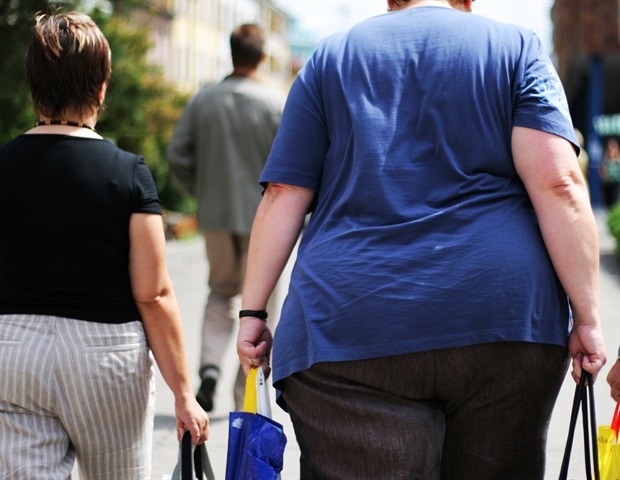According to researchers at Penn State’s Department of Nutritional Sciences, the faster a child takes bites during a meal or snack, the more likely he or she is to develop obesity. But research into this association is often limited to small laboratory studies, largely because it’s difficult to count a child’s bite rate; it requires someone to watch videos of a child eating and manually record each bite.
To make biting rate counting possible for larger studies and in different settings, researchers in Penn State’s departments of Nutritional Sciences and Human Development and Family Studies collaborated to develop an artificial intelligence (AI) model that measures biting rate.
A pilot study – recently published in Nutrition Frontiers – demonstrated that the system is currently 70% more effective than human bite counters. Although it requires more development, the researchers said the AI model shows promise in helping researchers — and potentially parents and health professionals — identify times when children need to slow down or adjust the way they eat.
Eating too fast and risk of obesity
When we eat quickly, we don’t give our digestive tract time to detect calories. The faster you eat, the faster it passes through your stomach and the body can’t release hormones in time to let you know you’re full. Later, you may feel like you ate too much, but when this behavior is repeated, those who eat faster are at greater risk of developing obesity.
Kathleen Keller, professor and Helen A. Guthrie Chair of Nutritional Sciences at Penn State and co-author of the study
A faster bite rate, especially when combined with a larger bite size, is associated with higher obesity rates in children, according to a previous study from Keller’s lab group. Other studies have shown that a larger bite size can also be a risk factor for choking.
“Bite rate is often the target behavior for interventions to slow the rate of eating,” said Alaina Pearce, research data management librarian at Penn State and co-author of this research. “Indeed, bite rate is a stable characteristic of children’s eating style that can be targeted to reduce their eating rate, consumption and, ultimately, their risk of obesity.”
According to Keller, a faculty member co-funded by the Penn State Social Science Research Institute, measuring bite rate is tedious and labor-intensive work, which means it is expensive, often limiting the amount of data considered in bite rate studies.
Leveraging technology to keep children healthy
To solve this problem, Yashaswini Bhat, a doctoral student in nutritional sciences and lead author of the study, wanted to develop the first AI bite counter for use in studies of children’s eating behaviors.
“I’m interested in AI and data science, but I had never developed a system like this,” Bhat said.
She collaborated with Timothy Brick, associate professor of human development and family studies at Penn State and co-author of the study, to create a system that could identify children’s faces in a video with multiple people and then detect individual bites when a child was eating.
“An experienced and knowledgeable collaborator like Dr. Brick was invaluable to this project,” Bhat said.
The researchers used 1,440 minutes of videos from the Keller Study of Food and the Brain, a National Institute of Diabetes and Digestive and Kidney Diseases-funded study of the neural mechanisms that may influence overeating in children. The video footage included 94 children aged seven to nine years consuming four meals on different occasions with varying amounts of the same foods.
The researchers identified bites in 242 of the videos by watching the videos and noting each bite. They then used this information to train the AI model. Once the model was able to identify events that appeared to be bites, the researchers had it evaluate 51 other videos from the same dataset. The researchers then compared the bites identified by the model to see if they matched the bites coded by the research assistants.
A successful first step
“The system we developed was very successful in identifying children’s faces,” Bhat said. “It also did an excellent job of identifying bite marks when it provided a clear, unobstructed view of a child’s face.”
The system, however, is not yet ready for large-scale use, according to Bhat. The results showed that the model was about 97% as successful as a human at identifying a child’s face in the video, but was about 70% as successful as a human at identifying each bite mark.
“The system was less accurate when a child’s face was not in clear view of the camera or when a child was chewing on their spoon or playing with their food, as often happens near the end of a meal,” Bhat said. “As one might imagine, this type of behavior is much more common in children than in adults. Chewing on a utensil sometimes appears like a mouthful, which makes it more difficult for the AI model.”
Although more work is needed, the researchers said this study represents a successful pilot test. With more training, they said the system — called ByteTrack — would more accurately identify bites and learn to ignore other actions, like sipping a drink.
“The end goal is to develop a robust system that can operate in the real world,” Bhat said. “One day, we may be able to offer a smartphone app that alerts children when they need to slow down their eating so they can develop healthy habits that will last a lifetime.”
The National Institute of Diabetes and Digestive and Kidney Diseases, the National Institute of General Medical Sciences, the Penn State Institute for Computational and Data Sciences, and the Penn State Clinical and Translational Science Institute funded this research.
Source:
Journal reference:
Bhat, YR, et al. (2025). ByteTrack: A Deep Learning Approach for Bite Count and Bite Rate Detection Using Meal Videos in Children. Nutrition Frontiers. doi.org/10.3389/fnut.2025.1610363









